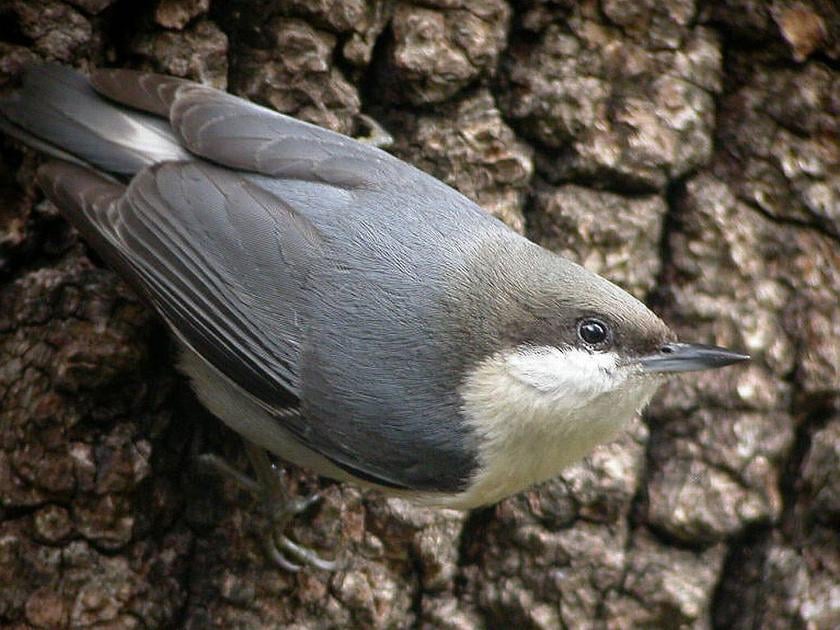
Despite being one of the more common local birds, you may have never seen a Pygmy nuthatch.
Their miniscule four-inch-long bodies are easy to overlook. They thrive in conifer forest, especially ponderosa pine woodland, so Teller County provides ideal habitat. Most birds are relatively silent outside of the breeding season, but the high-pitched beeps and squeaks of the pygmy nuthatch help locate them year-round. While hiking throughout the county, I have heard them beeping around most everywhere. They travel in small flocks and their incessant calling allows groups to stay in touch with each other.
Some birds are best identified by their behavior and nuthatches are an ideal example. They move up and down tree trunks looking for insects. As compared to other nuthatches, pygmys tend to spend more time moving along branches and twigs. Nuthatches often pause to stick their heads out at a 90-degree angle, creating a unique profile.
Nuthatches have long pointed beaks and stubby bodies with short square-tipped tails. Their body shape causes them to have an undulating or up-and-down flight pattern, a behavior also shared by woodpeckers. In fall, winter and spring, nuthatches may be seen flocking with chickadees, kinglets, warblers and other small birds. Other local nuthatch species include the white-breasted and red-breasted.
Pygmys are grayish above and whitish below. Their brownish cap drops to eye level and a small whitish patch on their nape is diagnostic, although it can be difficult to see. Relative to their miniature bodies, their head and beak appear oversized. Pygmy nuthatches nest in tree cavities and are year-round residents, but some may move to lower elevations in winter. Insects are a staple of their diet but they are also fond of suet, nuts and seeds, especially sunflowers, stashing food items under tree bark for a winter food supply. Sometimes they will wedge a seed in a tree crevice then pound on it to crack it open, thus “hatching the nut.” And they deserve to be noticed since flocks of Pygmys are some of the most reliable birds at feeder areas.
Notable reports in December from the Woodland Park Yard Area:
• Red-breasted and White-breasted nuthatch — a few sightings
• Dark-eyed junco subspecies: Pink-sided — a few around some of the time; Slate-colored — a few sightings; White-winged — one on Dec. 19
• Evening grosbeak — flock flyover of 26 on Dec. 12
• Pine siskin — a few sightings
• Red crossbill — a few around some of the time
Joe LaFleur studied wildlife biology and communications at Colorado State University and is the creator of “Better Birdwatching,” a DVD series on North American birds. Contact him with questions and feedback at joe@betterbirdwatching.com.
"bird" - Google News
January 07, 2020 at 02:00PM
https://ift.tt/2SZTOLJ
A very common bird you have never seen | Words on Birds - Colorado Springs Gazette
"bird" - Google News
https://ift.tt/2s1zYEq
Shoes Man Tutorial
Pos News Update
Meme Update
Korean Entertainment News
Japan News Update
No comments:
Post a Comment